Madagascar
4th largest island, after Greenland, New Guinea and Borneo
250 miles east of southern Africa, across the Mozambique Channel
Broke away from Gondwana 150,000,000 years ago
First humans arrived 2000 years ago. Closer to Africa, nevertheless the first arrivals were Indonesian
Population about 25,000,000, 18 tribes, mixes of Indonesian and African
“Tribe” is an accepted term, and inter-tribal violence continues in rural areas
Over 50% cannot read or write
Life expectancy is about 60
Average daily income: $2.00
Gained independence from France in 1960, after 65 years of French control
Over 50% are ancestor worshipers; 20% Protestant, 20% Catholic, 7% Muslim
Agriculture (cattle, rice, etc.) and fishing dominate; mining coming on
Politics is volatile, but so far elections have been mostly respected.
Governmental corruption is spoken of as a way of life. We experienced none.
Barbara and I and daughter, Nora and son-in-law, Dave, hired Tropical Birding to guide us on a tour of Madagascar between November 17 and December 2, 2019. Two of the principals of Tropical Birding, Ken Behrens and Keith Barnes authored a book entitled “Wildlife of Madagascar”, published in 2016. It proved to be a valuable resource. The book covers many of Madagascar’s mammals, birds, reptiles, frogs, invertebrates and distinctive plants, focusing on those that visitors are most likely to encounter.
The mammals include Lemurs, (we saw 13 species) Carnivores, (none seen) Bats, (1 species seen) Tenrecs, (1 species seen) Rodents (1 species seen) and Marine Mammals (none seen)
The following is quoted from the Behrens and Barnes “Wildlife of Madagascar”:
“A brief introduction to Madagascar. Madagascar is so different from the rest of the world that it is sometimes called ‘The Eighth Continent’. Not only does it have the high level of endemism (species not found elsewhere) that is typical of an island, but it also boasts remarkable diversity, which for some groups approaches that more typical of a whole continent. Madagascar is the land of lemurs, a radiation of our own primate order that evolved into exhilarating diversity on this island. These endearing creatures are the ambassadors for Malagasy nature; many people who have no idea where this island is located immediately recognize the Ring-tailed Lemur. Madagascar is also a land of fabulous birds, ancient reptile lineages, and six of the world’s nine species of baobabs. All naturalists find Madagascar fascinating as a treasure-trove of biodiversity and a ‘laboratory of evolution’, much like the Galapagos but on a grander scale. And for travelling naturalists, Madagascar is a ‘must-visit’ place. Although Madagascar has long been known for birds and mammals, its reptiles, amphibians, insects and plants are just as unique.”
We arrived in Antananarivo, (“Tana”) Madagascar on Air France from Paris at 11:35 p.m. on November 17, 2019. (We had traveled from Iowa to Paris the day before and stayed overnight near the Charles De Gaulle airport.) We were joined at the Tana airport by our Tropical Birding guide, Emma, and a driver. It was very late but after a short, bumpy and dark drive, we were received at our Hotel, Au Bois Vert, and comfortably accommodated for what remained of the night.
November 18: After a late breakfast we birded around the pleasant garden and grounds of the Hotel Bois Vert. The Red Fodies were plentiful, along with 8 other common Madagascar city dwelling birds, most endemic to Madagascar.
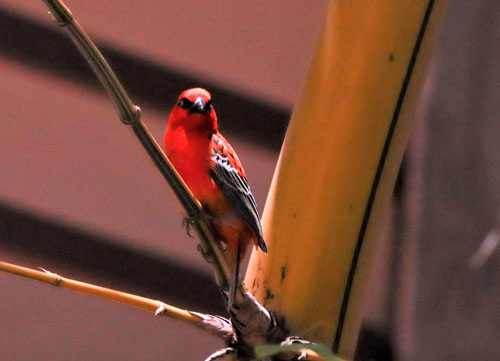
The find of the morning, however, was a handsome specimen of Oustalet’s Chameleon, just a few feet from our front doors.
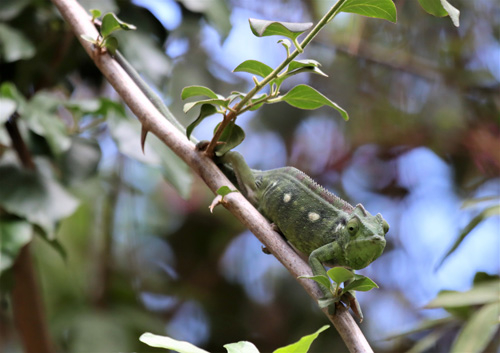
The afternoon was occupied by a short trip to Lake Alarobia in the heart of Tana’s industrial area. This Lake is home to the endemic and threatened Meller’s Duck (2 shown below with a White-faced Whistling Duck).
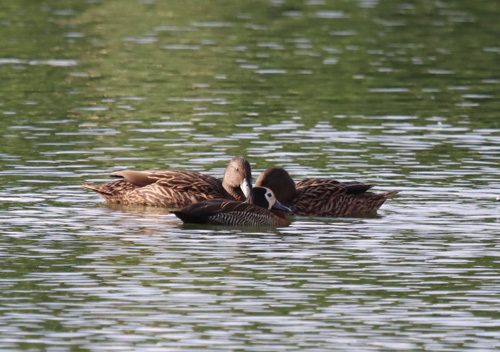
A Madagascar Pond Heron with its bright blue bill was displaying across the water.
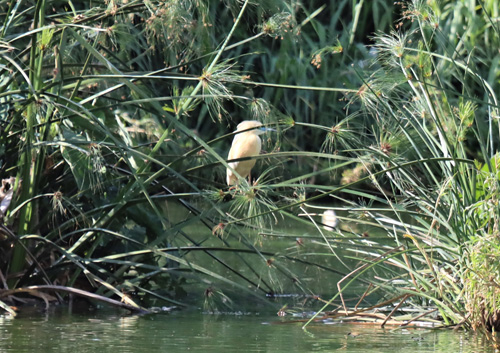
This Malagasy Kingfisher was lovely in its dark blue coat. (photo by Dave)
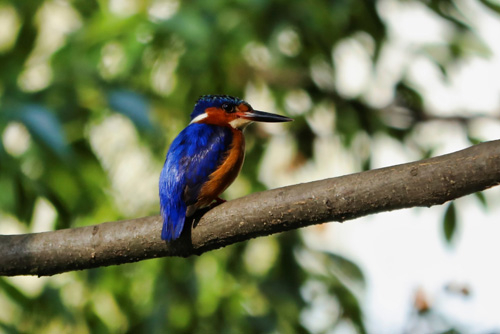
Our second night at Bois Vert included a delicious dinner and a restful sleep (except for the music emanating late into the morning from a nearby Saturday night revelry) after which we flew to Tulear in southwest Madagascar, for a few days of birding and lemuring in or near the Spiny Forest.
Here with the expert help of Fosa and his crew, we encountered my first species of a new bird family in Madagascar, a Long-tailed Ground-Roller.
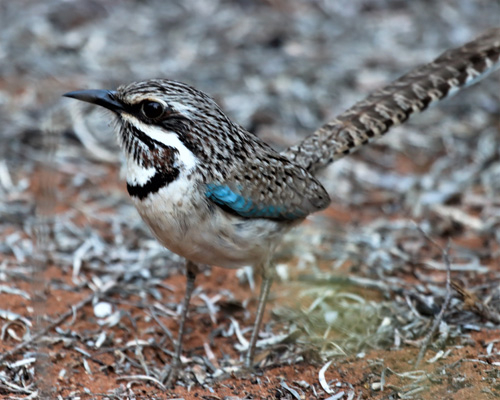
Other notable finds were Madagascar Turtle-Doves, Namaqua Doves, Madagascar Coucals, Madagascar Cuckoo, Madagascar Nightjar, some shorebirds, Madagascar Sparrowhawk, Madagascar Hoopoe, and my second new family member (from the Malagasy Warbler Family), a Thamnornis. Also, Madagascar Bulbuls, Magpie-Robins, and Wagtails. The colonial nesting Sakalava Weavers were actively engaged in nesting at the entrance to Fosa’s private reserve.
And our first Vanga, this Chabert Vanga at the top of an Octopus Tree.

On our night walk, here we also found our first lemurs: a Gray-brown Mouse Lemur from the numerous Mouse Lemur Family:
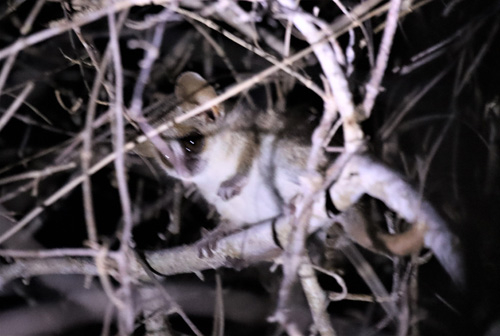
One of the highlights of our night walk was this cute, but prickly, Lesser Hedgehog Tenrec:
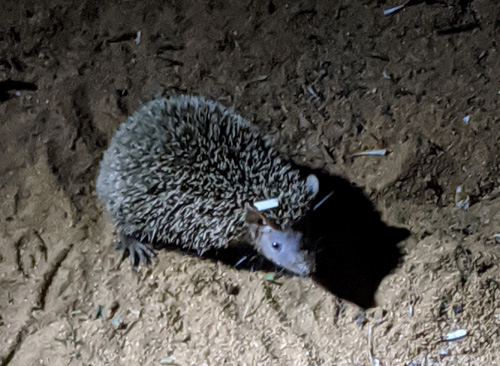
We also found this Torotoroka Scops-Owl.
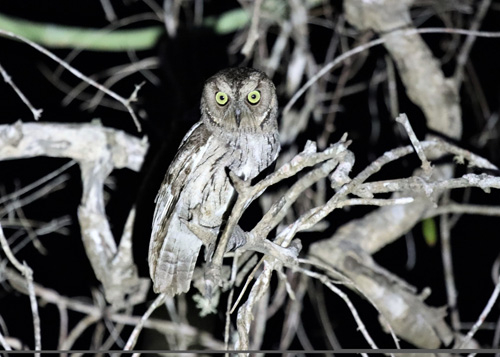
No report of a visit to the Spiny Forest would be complete without mention and pictures of the famous Baobab Trees and Octopus Trees.

The town of Tulear was an attraction in and of itself, partly because of the numerous rickshaws crowding the already pedestrian crowded streets, and the local folks who use them for transportation when walking becomes too tiring. Fortunately, the terrain of the city is very flat. The rickshaws vastly outnumbered other modes of transportation and we were told that many of the young men operators were from the southernmost area of Madagascar and that they come to Tulear in the tourist season to make a little money before returning to their homes. (photo by Dave)
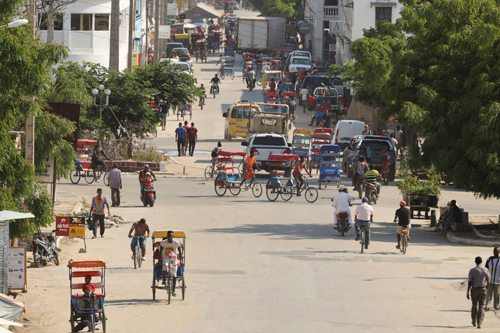
Part 2 of my Blog will report more of our tour of Ifaty, as well as La Table and our boat trip to Nosy Ve (November 20, 21 and 22).
